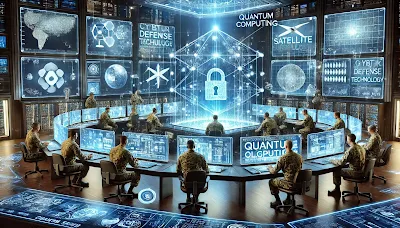
Introduction
The increasing volume of space debris poses a significant threat to global space operations. The recent incident of a 500-kg space object crashing in Kenya has reignited concerns over space governance, liability, and mitigation measures. With the rise of mega-constellations and the growing number of satellites, urgent global action is required to ensure sustainable space activities.
What is Space Debris?
Space debris refers to non-functional human-made objects that remain in Earth’s orbit or re-enter the atmosphere. These include:
Defunct Satellites – Satellites that have outlived their operational life.
Spent Rocket Stages – Rocket boosters and fuel tanks left in orbit.
Collision Fragments – Debris from satellite crashes or missile tests.
Microscopic Particles – Paint flakes and tiny metallic fragments.
Types of Space Debris
Large Debris – Defunct satellites, rocket boosters, and abandoned spacecraft.
Small Debris – Fragments from satellite collisions and missile tests.
Microscopic Debris – Tiny particles that erode spacecraft surfaces over time.
Space Debris Threats and Challenges
1. Rising Space Traffic
The increasing deployment of satellite mega-constellations (e.g., Starlink, OneWeb, Kuiper) elevates the risk of collision and fragmentation.
2. Uncontrolled Re-entries
Lack of international penalties for countries allowing uncontrolled space object descents.
3. Difficulty in Tracking and Attribution
Many debris pieces are difficult to track, identify, and attribute to a specific country or company.
4. Weak Enforcement of Space Debris Laws
There are no binding international regulations that mandate effective debris management.
5. Space Environment Pollution
Space debris increases the risk of Kessler Syndrome – a cascading collision event that could make Earth’s orbit unusable.
Existing Space Debris Laws
1. Outer Space Treaty (1967)
Holds nations responsible for space activities conducted by both government and private entities.
2. Liability Convention (1972)
Imposes absolute liability on launching states for damages caused by their space objects on Earth.
3. Space Debris Mitigation Guidelines (UN COPUOS)
Encourages safe satellite disposal and deorbiting but lacks legal enforcement.
4. 25-Year Rule (UN & IADC)
Recommends that defunct satellites should be deorbited within 25 years – yet only 30% compliance has been observed globally.
5. National Regulations
Countries like USA, EU, and China have domestic policies to track, manage, and mitigate space debris, but enforcement remains weak.
India’s Initiatives for Space Debris Management
1. ISRO System for Safe & Sustainable Operations Management (IS4OM)
Launched in 2022, IS4OM monitors space objects posing collision threats to Indian satellites.
2. Project Netra (Network for Space Object Tracking and Analysis)
Tracks and catalogs debris as small as 10 cm within a range of 3,400 km.
3. Collision Avoidance Manoeuvres
In 2022, ISRO performed 21 collision avoidance manoeuvres to protect operational satellites.
4. Space Situational Awareness (SSA) Control Centre (2020)
India’s centralized hub for monitoring and managing space traffic.
5. International Collaboration
India actively participates in UN discussions on space debris mitigation and sustainability.
Way Forward: Strategies for Space Debris Management
1. Binding Global Regulations
The UN Committee on the Peaceful Uses of Outer Space (COPUOS) must enforce mandatory space debris disposal rules and penalties for violations.
2. Advanced Tracking Systems
Expand the use of AI-based tracking, Space Fence, and global monitoring networks to predict debris collisions.
3. Mandatory Deorbiting Plans
Space agencies should mandate satellite deorbiting plans before granting launch approvals.
4. Independent Global Liability Tribunal
Establish an international arbitration body to ensure swift compensation for damages caused by space debris.
5. Sustainable Space Technologies
Encourage reusable rockets, cleaner propulsion systems, and debris removal missions.
Conclusion
With the rapid increase in space activity, uncontrolled reentries pose significant risks. The lack of binding regulations has left affected nations without legal recourse. Strengthening global cooperation, strict debris disposal rules, and an effective liability framework are crucial for long-term space sustainability.
MCQs on Space Debris (UPSC CSE)
1. What is the primary cause of space debris accumulation?
(a) Meteor showers
(b) Satellite failures and collisions
(c) Solar flares
(d) Cosmic radiation
Answer: (b)
2. Which treaty holds nations responsible for space activities?
(a) Moon Agreement
(b) Outer Space Treaty
(c) Vienna Convention
(d) Kyoto Protocol
Answer: (b)
3. What is the objective of Project Netra?
(a) Space tourism development
(b) Space debris tracking and monitoring
(c) Rocket propulsion research
(d) Weather forecasting
Answer: (b)
4. Which organization formulated Space Debris Mitigation Guidelines?
(a) ISRO
(b) NASA
(c) UN COPUOS
(d) European Space Agency
Answer: (c)





